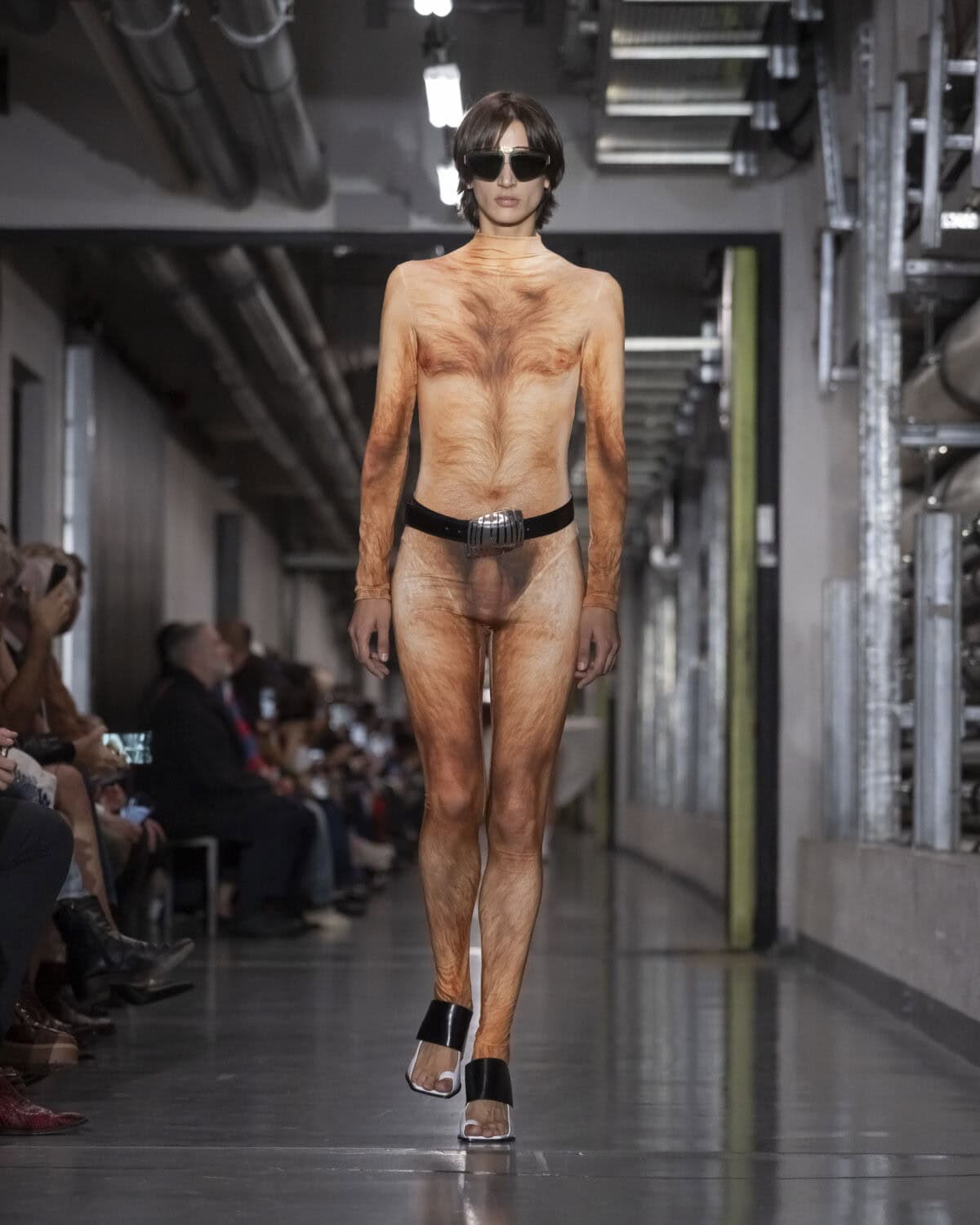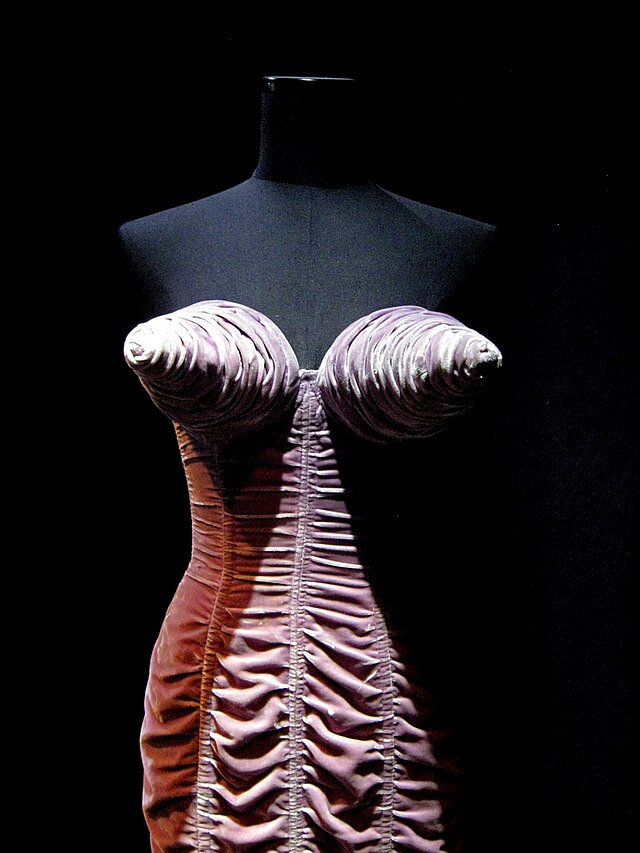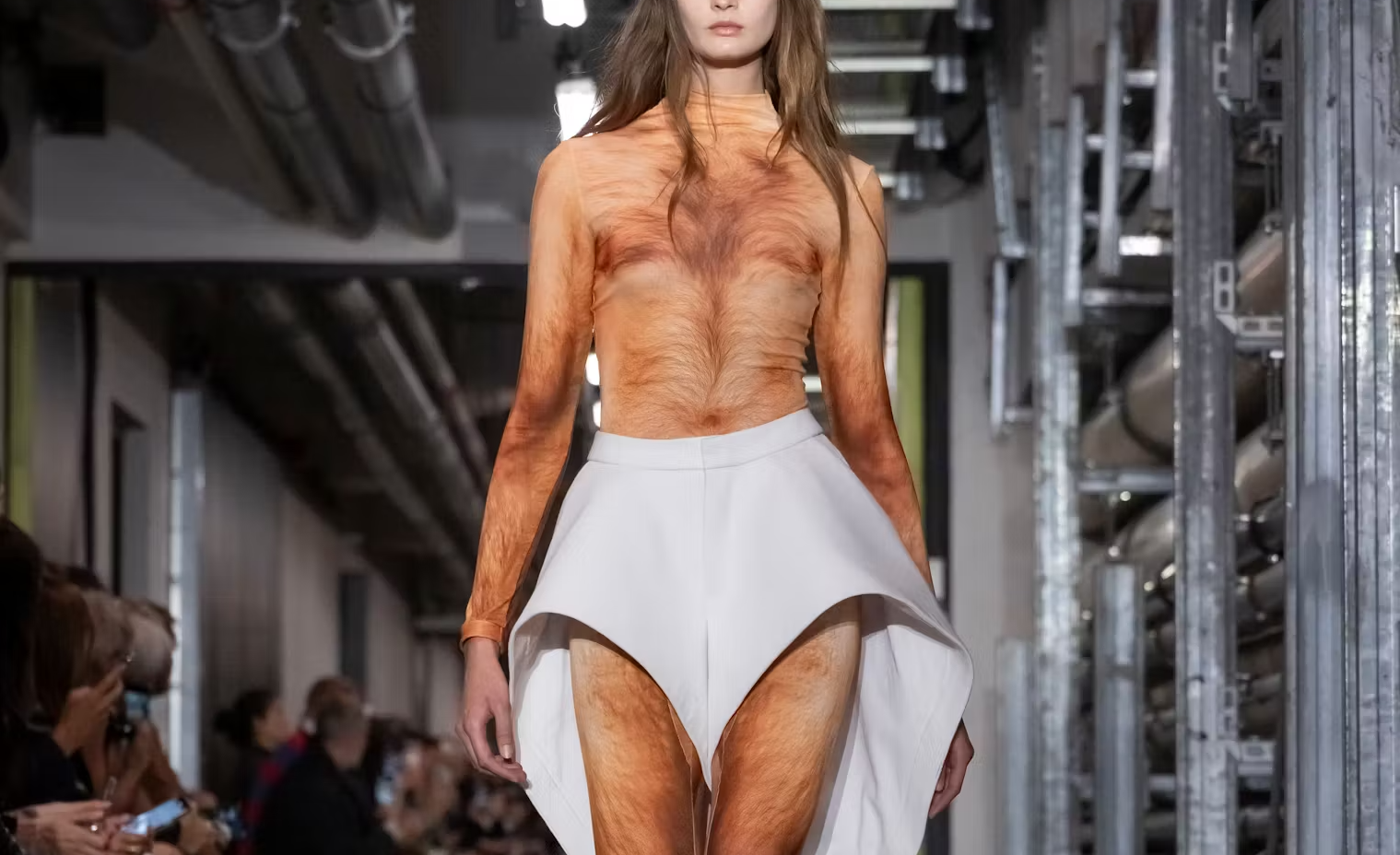The outraged response to Duran Lantink’s Jean Paul Gaultier debut says more about tastemakers than the clothes themselves
If you try to watch a video of Madonna sauntering down the Jean Paul Gaultier (JPG) runway in Los Angeles in 1992, you’ll be met with a black screen. The footage, of the singer’s bare breasts framed by a black rope harness, has ‘violated YouTube’s Terms of Service’.
The house of Gaultier was subject to similar digital censorship on Sunday, when Dutch designer Duran Lantink made his debut for the brand at Paris Fashion Week SS26, after being appointed the house’s creative director in April amid a larger game of industry musical chairs. Lantink arrived from his eponymous label and is known for a provocative sensibility best encapsulated by the vagina trousers he designed for Janelle Monáe in 2018. Even those, however, weren’t shocking enough to anticipate his first Gaultier runway collection, which included a faux-leather Borat-style bodysuit, a dress that revealed a woman’s crotch clothed in a small strip of fabric and a Grecian loincloth-inspired toga. The main talking point was his printed onesies – one worn by a man, the other by a woman – which took JPG’s famed optical illusions a step further by resembling a hairy naked male body, the full-length images of which were subsequently censored by Instagram.

Naturally, the collection went viral. Fashion critic Mandy Lee dismissed the collection as “not fashion”, claiming that the unflattering nature of the clothes was disrespectful to women, while comments sections were awash with consternation. The New York Times’s Vanessa Friedman went as far as to refer to the collection as ‘the fashion equivalent of an unsolicited crotch shot’. But the outrage wasn’t limited to the collection’s crudeness: netizens were also critical of its aesthetic and technical quality. Ensembles were ill-fitting, particularly around the groin area; the lifelike naked onesies, meanwhile, appeared to be made out of cotton or nylon, resembling ‘something someone bought off Amazon for a cheap Halloween gag,’ fashion critic Anastasia Vartanian told me.
That’s not to say the show strayed that far from Gaultier’s tendency to provoke – it’s just that, historically, controversy was courted with a greater sense of artistry. Gaultier’s original conical bras, which debuted as part of his FW84 ‘Barbès’ collection, may have been provocative at the time, but they were also highly innovative and expertly constructed out of satins, denims and silks. Lantink’s collection, by comparison, came off as gimmicky: a ploy for virality at a time when a show’s success is decided, at least by mainstream media, by search engine activity for the brand in its aftermath. ‘Perhaps this is necessary in such an oversaturated landscape, where attention is a dwindling resource,’ posed Vartanian. ‘But I also think people are becoming fatigued with gimmicks, so who knows how long this tactic will be successful?’

The public’s disgust partly depends on the logic that a high-fashion garment must incorporate some level of craftsmanship and aesthetic reward. After all, aren’t clothes designed to be worn? Take Alexander McQueen’s bumster trousers from his 1993 ‘Taxi Driver’ collection. They were suggestive and controversial, but they also went on to ‘influence the trend for low-waisted trousers which swept through culture,’ says Vartanian, who adds that she can’t see any parts of Lantink’s collection having the same effect.
The collective ruling was that Lantink’s collection offered vulgarity without substance. Gaultier’s original clothes may have been provocative, but they were also replete with meaning. His sculpted cone bras went on to transform conformist lingerie into a bold statement of sexual empowerment that is still embodied by female pop stars to this day. Meanwhile, at his aforementioned Los Angeles show in 1992 – hosted as a fundraiser for the Foundation for AIDS Research amid the crisis – his latex ensembles symbolised the importance of wearing protection, while same-sex couples walking arm-in-arm in interchangeable outfits were a show of support for gay relationships.

For Lantink, the jury is still out. Last season, the designer’s namesake brand sent a male model down the runway clad in a pair of silicone breasts. Lantink told Elle that this was a ‘reflection of what’s happening around me,’ which the interviewer took as a reference to our increasingly fluid understanding of gender. Lantink also collaborated with the SistaazHood organisation on a photobook documenting transgender sex workers in Cape Town. Perhaps, dressing a woman in a nude male bodysuit was a commentary on the transgender body; a show of solidarity at a time when trans rights feel increasingly under threat. Lantink’s home country, the Netherlands, saw recent political setbacks which stalled a proposal for a self-determination law, while Donald Trump has rolled back trans rights in the US since taking office and the UK government has moved to ban trans people from toilets of the gender they identify with.
If the consensus is still that Lantink’s debut crossed the line of provocation into vulgarity, perhaps that response is less a reflection of the show itself and more indicative of the systems of taste that exist to prop-up luxury fashion on a pedestal – systems largely dictated by a particular elite class and regurgitated by the aspirational in comment sections. Who decides what constitutes ‘vulgar’, anyway? Is the knee-jerk reaction to Lantink’s bodysuits down to nylon feeling too affordable, or because we’re not accustomed to seeing a hairy male body on a woman? As Gaultier once said, ‘I’m still astounded by some people’s reaction to things I find quite normal.’
Read next: Rosalind Jana asks: can surreal fashion still shock us?
